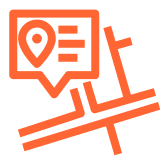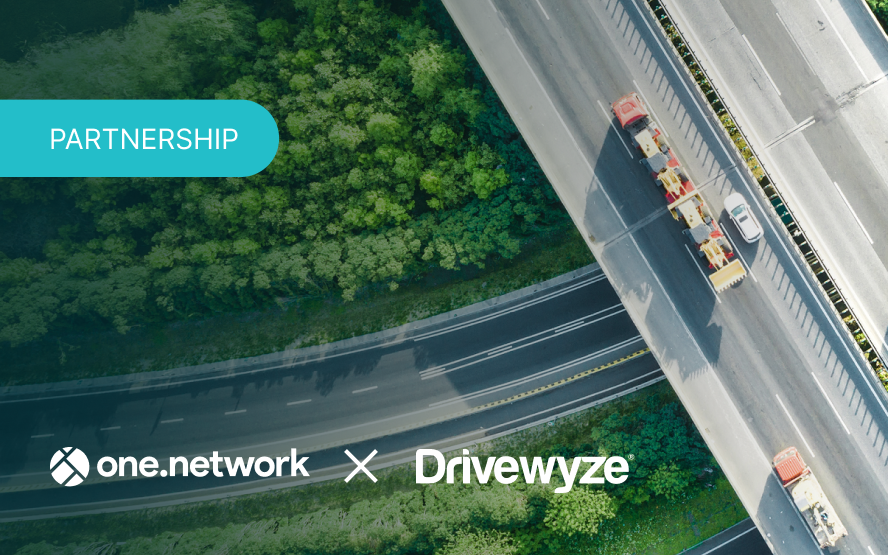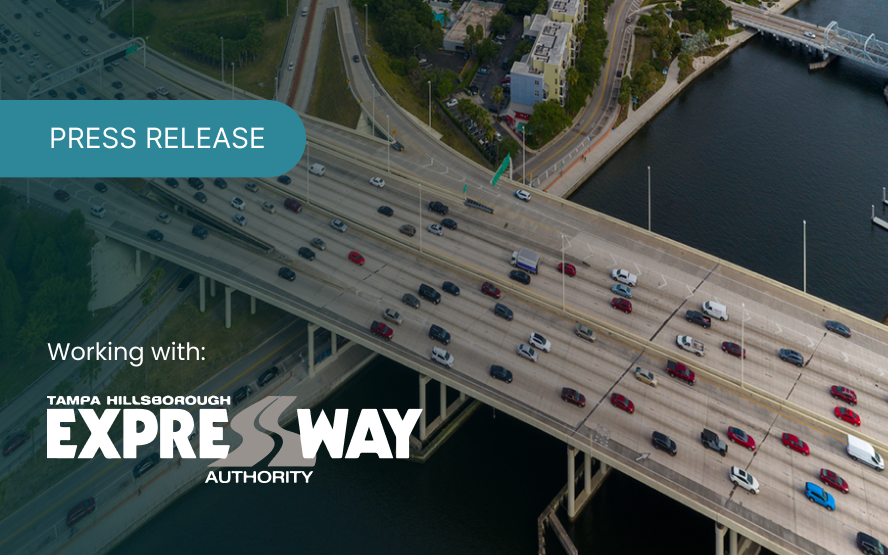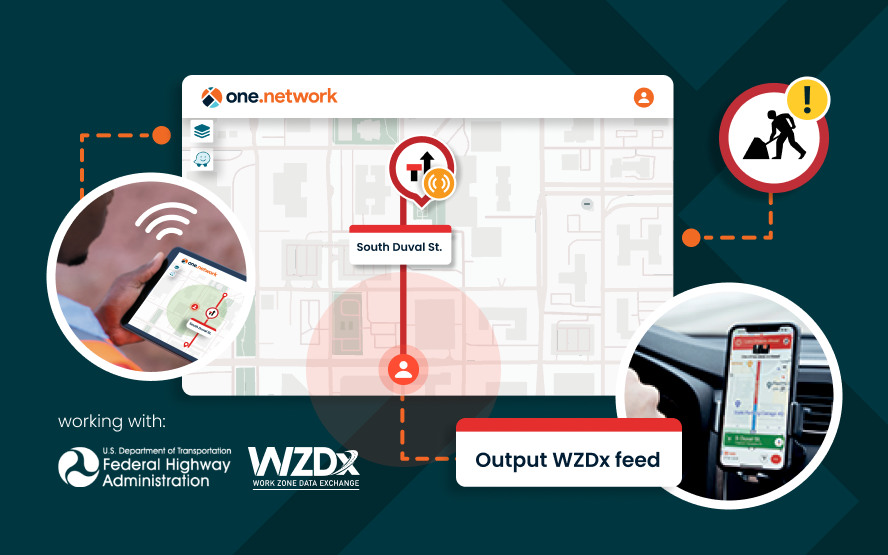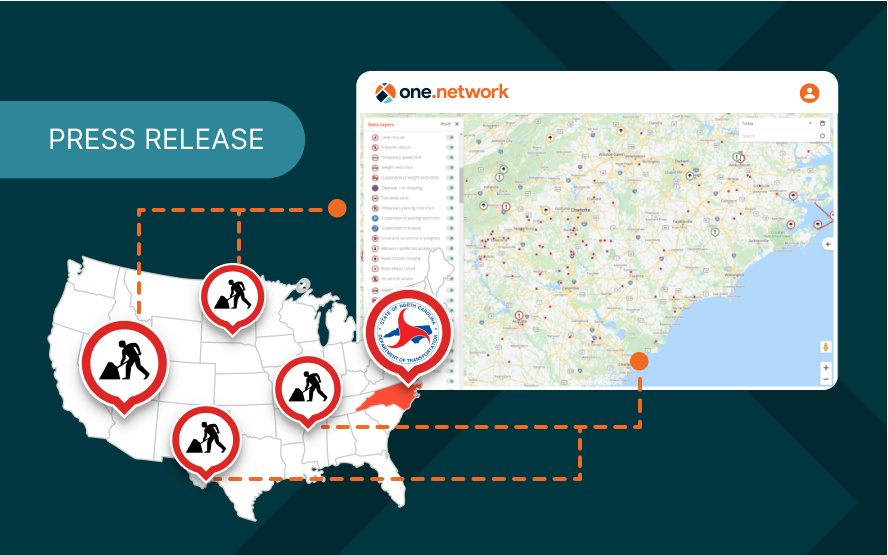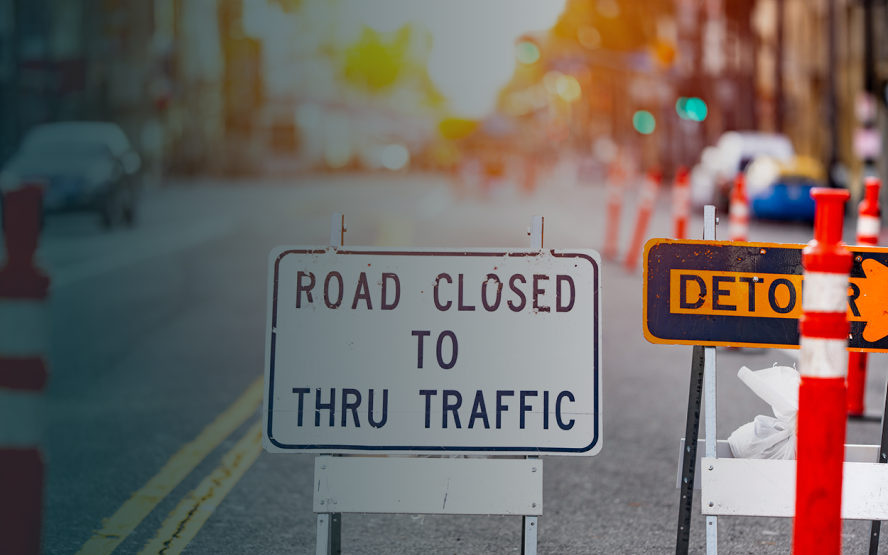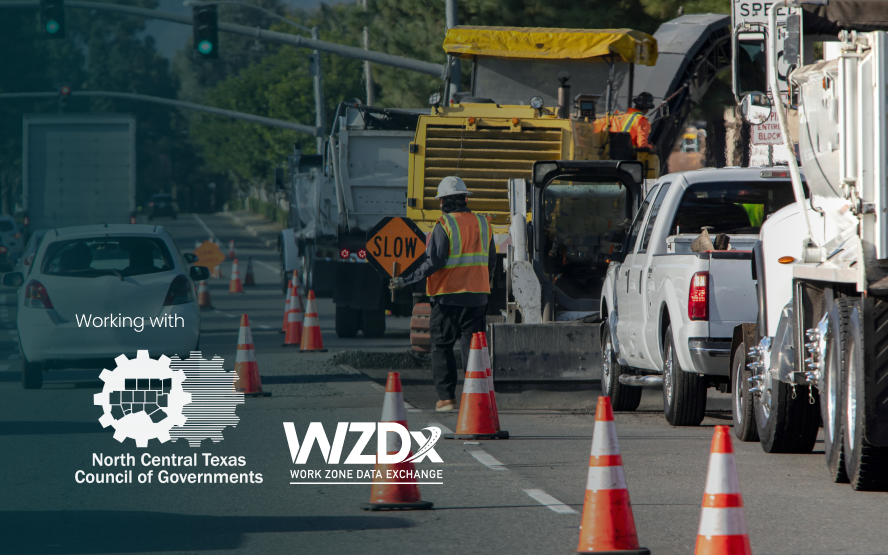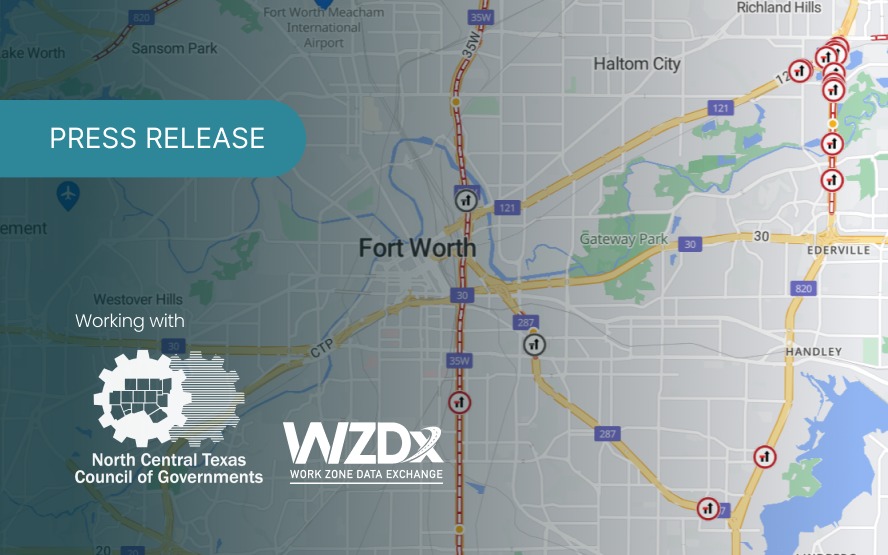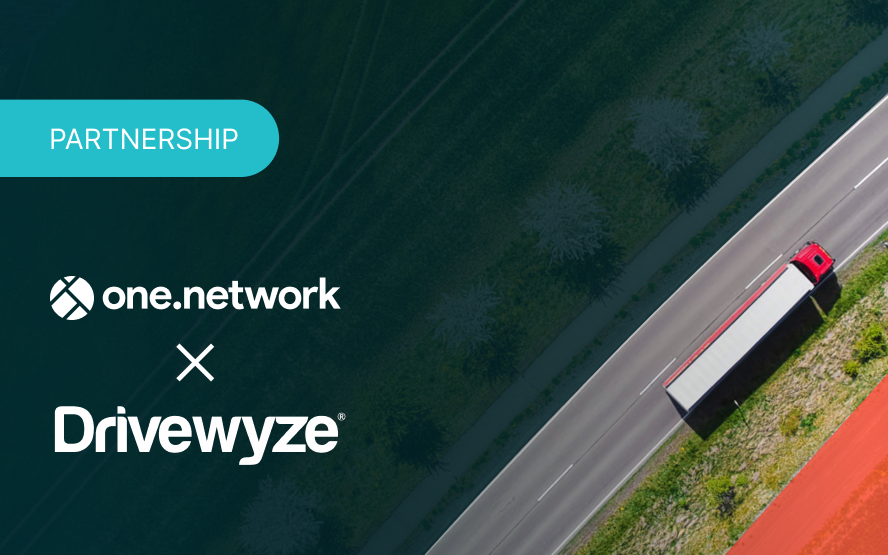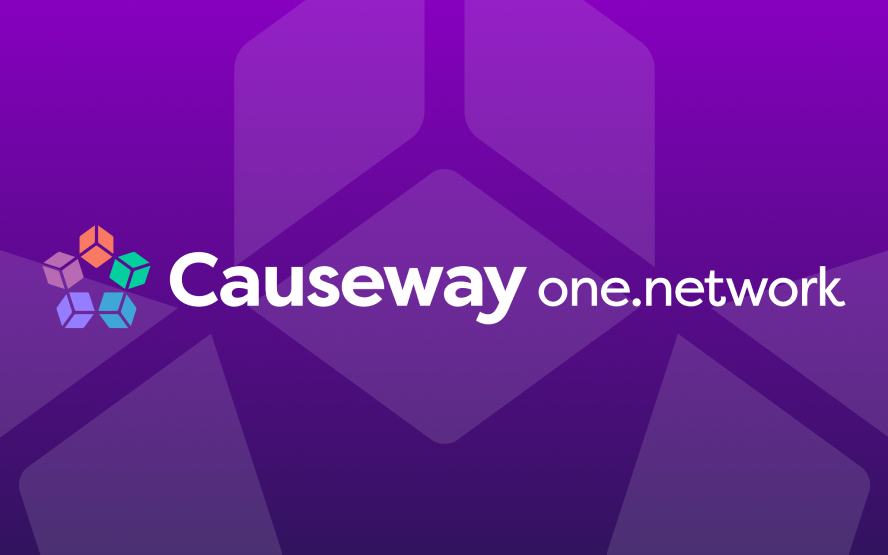28 March 2021
The missing link: how one platform can help you create and communicate work zone plans
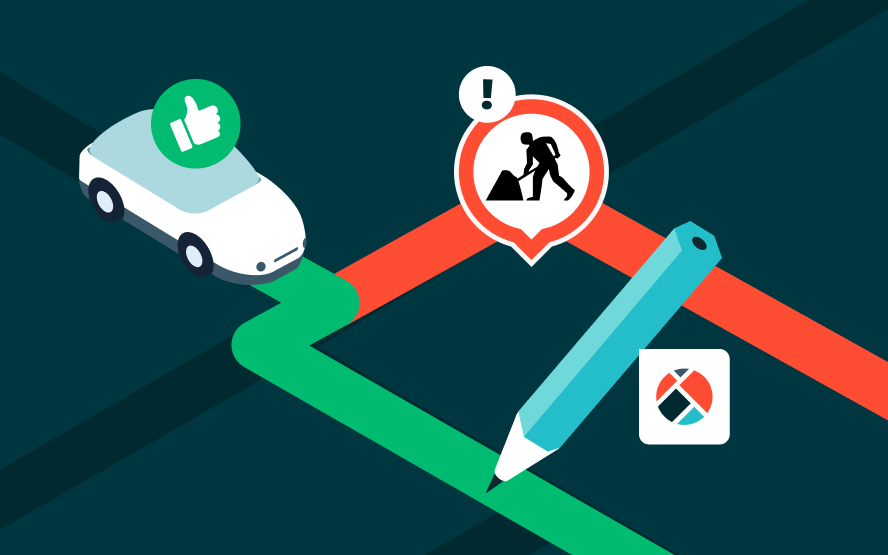
Before one.network existed, many of our customers simply used paper, or an Excel spreadsheet, to draw up their plans for work zones and road events. Transportation departments would notify the public of upcoming work zones via newspaper adverts.
And that worked, in its way. Work zones were planned, and transportation departments discharged their obligations to the public by communicating those plans.
But it took a very long time. And a lot of different people. And if the public didn’t read the right newspaper on the right day, they’d still be in the dark about what was going on – which is dangerous when it comes to roads.
We wanted to give officials at transportation departments, utility organizations, and event planning companies an easier way to create and communicate work zone plans. Many DOTs, cities, and counties were already using digital services to manage their roads – from using ATMS to incorporating WZDx standards – but to date, there’s still been a piece missing. It’s still difficult or impossible for transportation authorities to see every work zone, every road event or traffic incident, and every traffic management plan in one place.
Even the most progressive, tech-savvy departments who’ve managed to coordinate those things internally are left working with one hand tied behind their backs, because their neighboring jurisdictions aren’t always doing the same. Cities, counties, and states are left with a narrow view of their own road events, and often no view at all of their surrounding road events. That also means they can’t learn from each other or develop best practice together in any kind of systemised way.
This is the part where we introduce one.network.
Let us tell you a bit about it.
one.network: what does it do?
In short, it’s a one-stop shop for work zone and traffic management planning. It lets users create and communicate their traffic management plans by plotting them directly onto a real-time map, which sends live updates to GPS providers and the public.
The result is that you can create simple, digital plans for upcoming road maintenance and share them live on the one.network map, with all the essential info included.
As for actually creating the work zone plans, it’s a simple 3 step process.
1) Create and Coordinate
Plot a new event on the map and choose its category: work zone, special event, or incident. Add information such as an event name, description, dates, enforcement times and expected impact – and even a designated point of contact. While you’re at it, check to see what activity is happening around your event that might affect your own coordination — are there any other road closures or major events?
2) Add Detail
Step two is adding traffic management interventions associated with your event: this includes specific geometries of lane closures and road closures; detours; VMS signs, and temporary one-way systems. Bonus: with our Live Link solution, you can close roads and lanes in real-time from both our web-based tool and via our mobile app on the roadside — which immediately diverts drivers away from the closure.
3) Communicate
Finally, it’s time to share your plan. You can do this by publishing it live on the map to share the plan instantly with both the public and all major GPS providers. Not only this, but you can set up email alerts to notify your team or important stakeholders (e.g. media), share your plans on social media and auto-populate documents with the work zone, special event, or incident details, along with screenshots directly from the map.
How does one.network help?
The key advantage of one.network is that it lets transportation officials plan work zones and events in a newly efficient way; all from a single dashboard.
We’ve seen one.network help hundreds of organizations, including the majority of UK highway authorities, to improve their road maintenance communication. With the power to share work zone plans and all their details instantly, transport officials can communicate road closures and openings faster than ever before. This means the public are able to self-serve and answer their own queries, leading to huge reductions in contact center costs.
Not only does one.network allow for better communication between transportation officials and the public, but it also ensures stronger internal communication. Rather than drawing up work zones and event plans on paper or creating the details inside a spreadsheet, users can create their plans online on one easy-to-use dashboard and share their plans digitally with other team members.
What do users think?
We caught up with some of our day-to-day users to find out what they think about our one.network.
First, we spoke to Agnieszka Fedyna from the Royal Borough of Windsor and Maidenhead, one of the 90 transportation departments in the UK who use one.network to create traffic management plans. Agnieska uses one.network to create traffic management plans for the borough, particularly for its many large events – such as the Royal Ascot, the Windsor Triathlon and of course royal events, including Prince Harry’s and Meghan Markle’s Royal Wedding in 2018 and that of Princess Eugenie and Jack Brooksbank later in the same year.
“Before one.network, a single plan or road closure took 2 whole days. The platform saves me so much time…Anyone who is not using one.network is wasting their own resources. It’s the perfect tool.”
– Agnieska Fedyna, Royal Borough of Windsor and Maidenhead
Events organizers also deploy one.network to help them plan routes on the road network. Andrew Taylor is the organizer of large-scale cycling event Vélo Birmingham, involving 15,000 cyclists cycling 100 miles and the closure of several routes.
Andrew and the Active Sports and Entertainment team used one.network to communicate road closures and openings surrounding the cycling event to the public, minimizing congestion around the route.
“[one.network] proved to be vital in making sure residents and road users were aware and could prepare for road closures, especially as these happened across the full route. The fact that we were able to inform of live re-openings as soon as they happened and that this was communicated so widely ensured disruptions were kept to a minimum.”
– Andrew Taylor, Active Sports and Entertainment
Curious?
If you’re interested in learning more about one.network and how it can help you create and better communicate your work zone plans, get in touch. Our team is excited to show you around.
